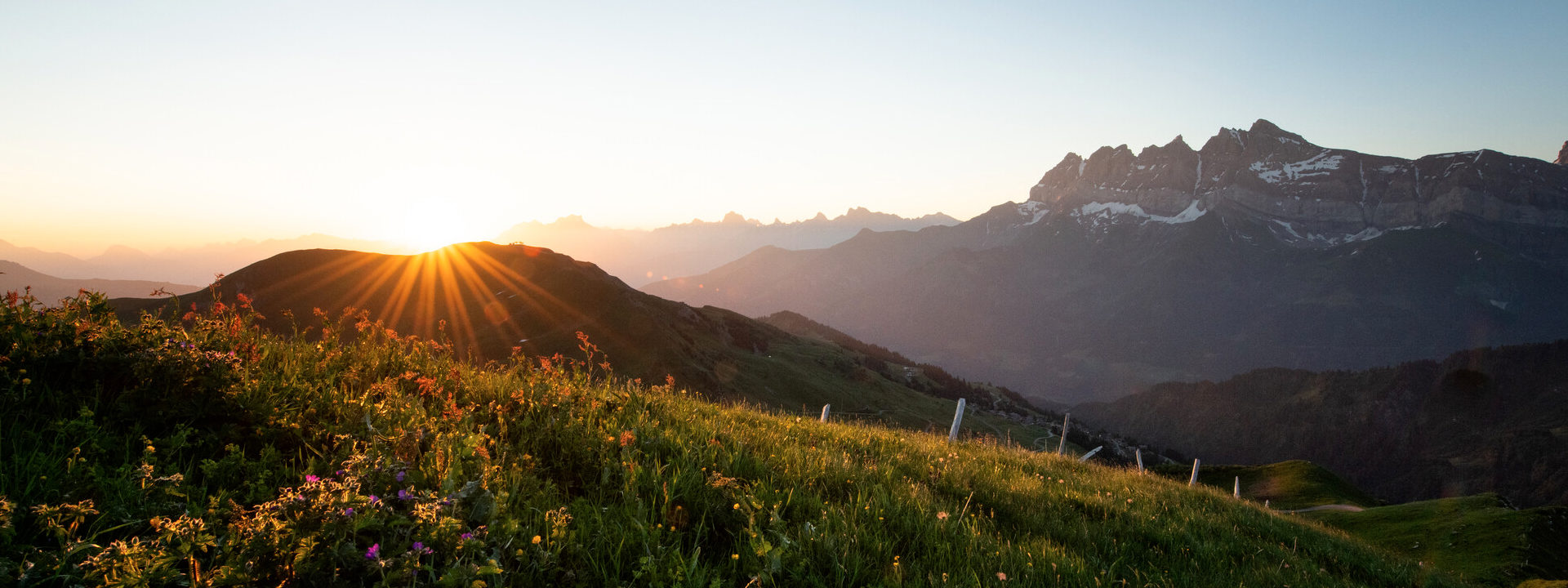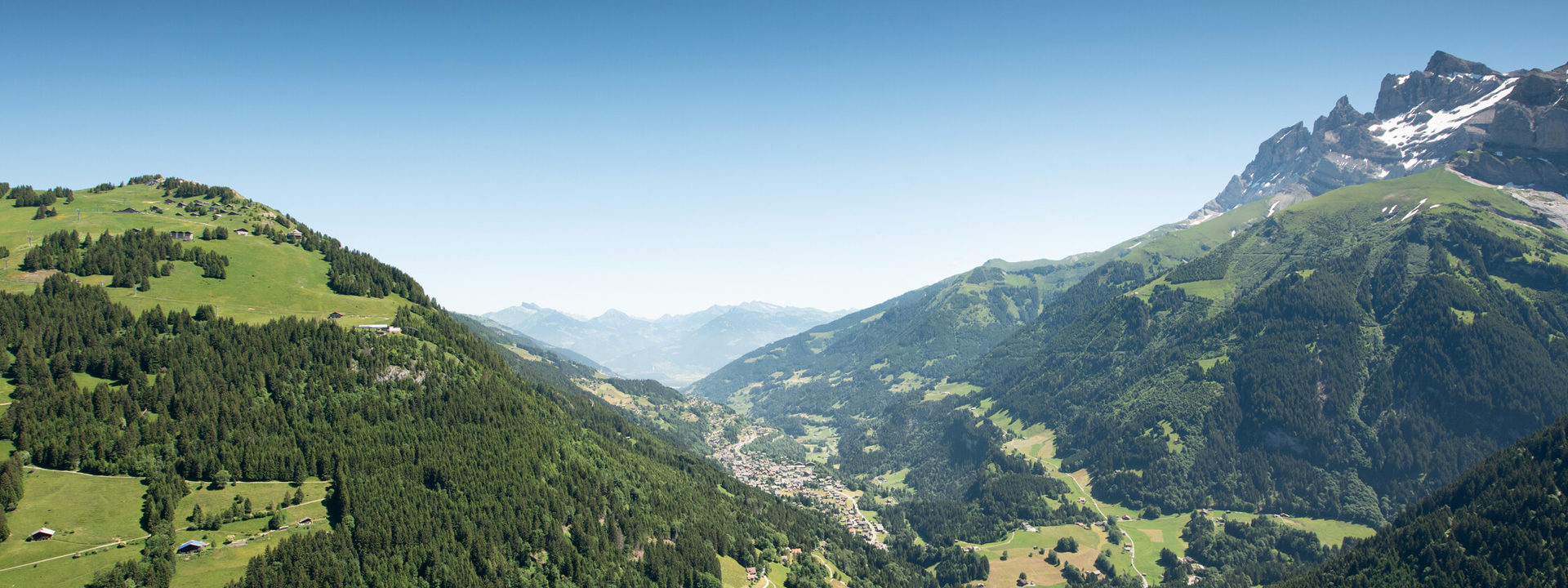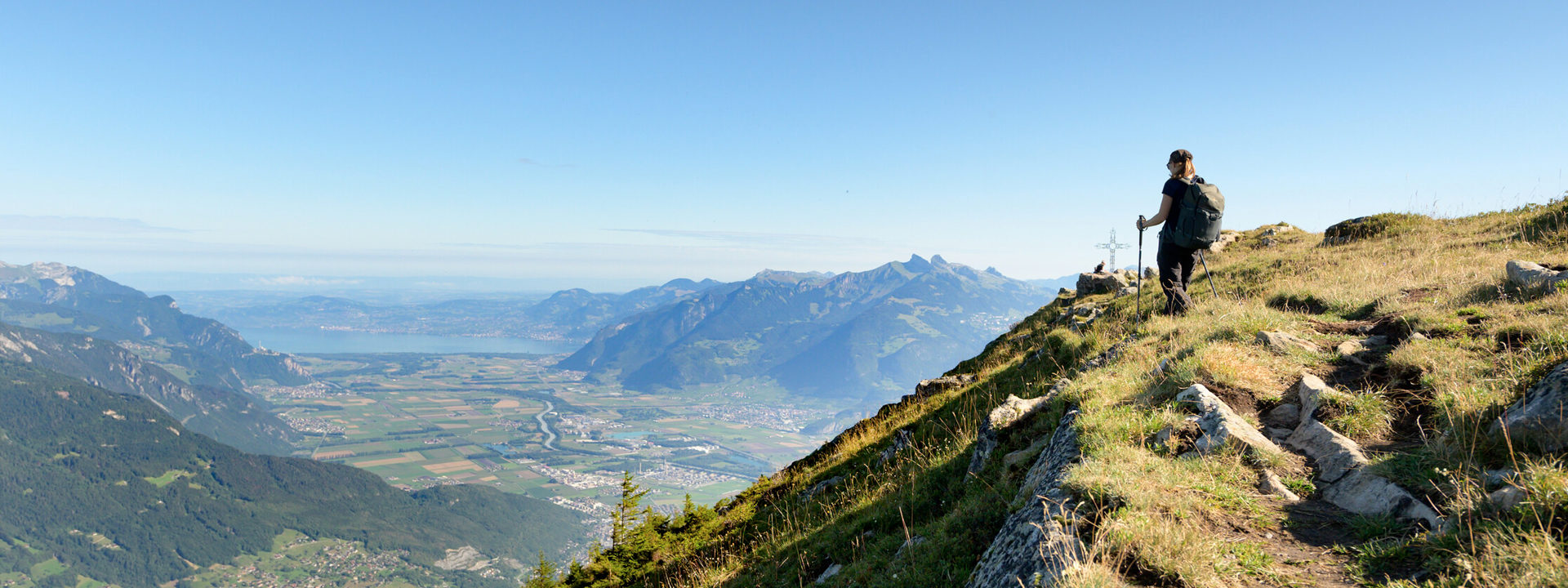Located in the geographical area called the ‘Chablais’, which straddles the cantons of Vaud and Valais, the Illiez Valley (Valais) is home to the Région Dents du Midi tourist destination. The valley was carved by the Vièze River, which flows from the Dents du Midi massif, an iconic range of seven towering peaks all over 3,000 metres.
The Celts
The etymology of many local placenames (Illiez, Vièze, Nant) is proof that the original Illiez Valley dialect is of Celtic origin. Indeed, it is believed that the valley was first inhabited during the Celtic infiltration of Gaul, somewhere around the 6th century BC. Just prior to the Roman conquest, the area was inhabited by a tribe of Celts called the Nantuates – ‘nanto’, meaning valley but also a brook, or a river in a valley. The Nantuates used the name Caput Lacense to designate the region. The colloquial version of this name, ‘Capo-lay’, most likely spawned the modern name of Chablais.
Rumor has it…
This research belies the long-held tradition (up until the 20th century) – that the original Illiez Valley inhabitants were Roman soldiers of Egyptian origin. These, having escaped the massacre and martyrdom of the Theban Legion ordered by Emperor Maximian between 285 and 302 AD, supposedly found refuge in the Illiez Valley’s hidden nooks and crannies. It makes for a great story, but no real proof of this theory has ever been found.
From 1st to 11th century
The Romans retained control of present-day Valais for four hundred years but were eventually succeeded by the Kingdom of Burgundy in the middle of the 5th century. The Valais was a part of the Frankish Empire from about 534 AD until the creation of the second kingdom of Burgundy by Rodolphe the 1st in 888 AD. It is during this period that the small territory of Tête-du-Lac, which included the Illiez Valley, was formed. Much later, it became part of the House of Savoy when Savoy acquired the Bishopric of Sion.
The House of Savoy
In the Middle Ages, from 1036 to 1536, there was no discernable division of powers. This makes it difficult to identify who, if anyone, was a representative of power in the valley. Some documents show that there was a spot called ‘La Cour’, meaning a tower, which might have been a castle or headquarters of a lordship for Val-d’Illiez and Champéry (Troistorrents belonged to Monthey). This tower was situated in the optimal spot for surveying passage of pilgrims coming from the Chartreuse de Mélan-Taninges monastery or travelling between Saint-Jean d’ Aulps and Saint-Maurice. It seems to be towards the end of the 16th century that the lordship disappeared, the Saint-Maurice Abbey having widened its jurisdiction to include our valley.
Occupation of the Haut-Valais
From 1536 to 1798, beginning under the Dukedom of Savoy and continuing under the occupation by the Upper Valais, the people of the Illiez Valley enjoyed a limited independence. The occupation of the Lower Valais by the Upper Valais continued this to some extent – but around 1690 some rights were taxed. By 1790, this taxation system had become so defective that the local population rose up in defiance – led by Pierre-Maurice Rey-Bellet, or ‘Gros-Bellet’. They eventually won independence for the Lower Valais in 1798. There is a statue of Gros-Bellet, in the Val-d’Illiez village square.
Official separation of the municipalities of Val-d’Illiez and Champéry in 1839
The official separation of Champéry and Val-d’Illiez began in 1803, after at least a century of being combined under one parish. On 23.11.1839, the state council pronounced the separation of the municipalities of Illiez and Champéry. Note that the sector of Tière (between the Soi and Tière rivers), was originally allocated to Champéry, but finally opted to stay with Val-d’Illiez. Therefore, Val-d’Illiez kept the whole of the Dents du Midi’s northern flank.
The first tourists arrive
In the 18th century, a new school of thought began to transform the way people regarded the Alps. The mountains, once a place to be feared and avoided, were suddenly a place to be visited. The English adventurers were the first to arrive, bringing with them their families and friends and an inescapable movement towards modernity. The people of the Illiez Valley began to diversify their economic activities, opening hotels, becoming mountain guides, shopkeepers, coach drivers, and more.
Reunification for tourism
In 2017, the valley’s three communes decided to join the three tourist offices of Champéry, Morgins and Val-d’Illiez-Les Crosets – Champoussin to form Région Dents du Midi SA. The aim of this company is to promote the region’s tourism offer centred around a shared brand represented by the mythical Dents du Midi mountain range.


